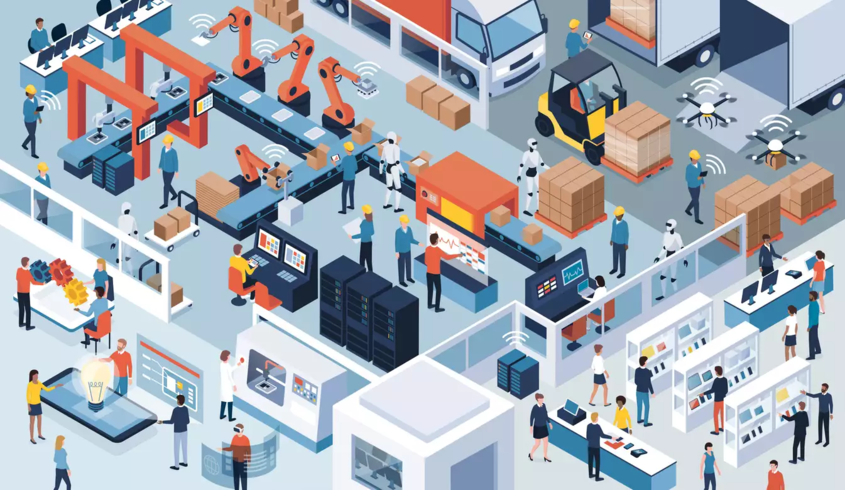อาเซียนมีฐานการผลิตยานยนต์ที่สำคัญในอินโดนีเซีย มาเลเซีย ไทย และเวียดนาม นอกจากนี้ การเติบโตของ GDP การขยายตัวของเมือง และโครงสร้างพื้นฐานของถนนขับเคลื่อนการซื้อขายและการใช้รถยนต์ส่วนบุคคล ภาคอุตสาหกรรมยานยนต์ในอินโดนีเซียดูแล้วมีอนาคตที่สดใส นับเป็นภาคอุตสาหกรรมที่สำคัญและยังส่งเสริมการเติบโตทางเศรษฐกิจของประเทศ รัฐมนตรีว่าการกระทรวงอุตสาหกรรมของอินโดนีเซียระบุว่าอุตสาหกรรมยานยนต์ในอินโดนีเซียมีการเติบโตที่ไม่ธรรมดาในปี 2021 โดยมีอัตราการเติบโตเป็นเลขสองหลักอยู่ที่ร้อยละ 17.82 ด้วยการผลิตรถยนต์ 2.35 ล้านคันต่อปี

Source: Automotive Associations, Nikkei Research
ยอดขายรวมของรถยนต์ใหม่ในอินโดนีเซีย ไทย มาเลเซีย เวียดนาม ฟิลิปปินส์ และสิงคโปร์ มีมูลค่า 2.79 ล้านคันในปีที่แล้ว เพิ่มขึ้นร้อยละ 14 จากปี 2020 โดยเพิ่มขึ้นร้อยละ 67 ในอินโดนีเซีย รองจากประเทศไทยก็คืออินโดนีเซียซึ่งได้กลายเป็นผู้ผลิตยานยนต์รายใหญ่เป็นอันดับสองใน SEAN ด้วยค่าแรงที่ต่ำและอัตราการใช้รถยนต์ที่ต่ำ ได้เปิดประตูสู่ผู้ผลิตรถยนต์หลายราย รวมถึงโตโยต้า นิสสัน และเจนเนอรัล มอเตอร์ส อย่างไรก็ดีคนอินโดนีเซียมีความนิยมในรถยนต์ขับเคลื่อน 2 ล้อ (4 x 2) ที่มีความทนทาน และในช่วงไม่กี่ปีที่ผ่านมาเริ่มมีการผลิตรถยนต์ขับเคลื่อนสองที่ประหยัดไฟด้วยราคาที่ไม่แพงในอินโดนีเซีย

Source: Automotive Industry Portal, MarkLines
พบว่าการผลิตยานยนต์ในปี 2020 ลดลงอย่างมีนัยสำคัญอยูที่ 690,176 คันเมื่อเทียบกับปีก่อนหน้า ทั้งนี้เนื่องมาจากการระบาดของ COVID-19 ทั่วโลก ส่งผลให้ผลิตภาพลดลงในหลายภาคอุตสาหกรรม อย่างไรก็ตามในปีถัดมา ภาคการผลิตยานยนต์เติบโตอีกครั้งค่อนข้างรวดเร็ว โดยมียอดการผลิตรวมอยู่ที่ 1,121,967 คัน ยอดรวมในปี 2021 เพิ่มขึ้นเกือบสองเท่า นับเป็นอีกปีที่แข็งแกร่งของอุตสาหกรรมอีกปีหนึ่ง

Source: Association of Indonesia Automotives Industries (GAIKINDO)
การค้ากลุ่มยานยนต์ของอินโดนีเซียเกินดุลนับตั้งแต่ปี 2019 ถึงปี 2021 การส่งออกและนำเข้าทั่วทั้งโลกต่างลดลงในปี 2020 ซึ่งเป็นปีที่มีโรคระบาดใหญ่ทั่วโลกทำให้เกิดข้อจำกัดและการหยุดชะงักในกิจกรรมทางธุรกิจ ขัดขวางห่วงโซ่อุปทานทั่วโลกและส่งผลกระทบต่อการผลิตทั้งหมด อย่างไรก็ดีตัวเลขการส่งออกและส่งออกของอินโดนีเซียในปี 2021 ได้เพิ่มขึ้นอย่างมีนัยสำคัญ โดยมีมูลค่าอยู่ที่ 1.93 พันล้านดอลลาร์สหรัฐ แม้ว่าปี 2021 จะมีกิจกรรมการค้าที่สำคัญเกิดมากที่สุดในช่วงสิบปีที่ผ่านมา แต่ยอดเกินดุลการค้าในปี 2021 นั้นยังถือว่าต่ำเมื่อเทียบกับปี 2019 และ 2020 โดยมีมูลค่าดุลอยู่ที่ 2 พันล้านดอลลาร์สหรัฐและ 1.95 พันล้านดอลลาร์สหรัฐตามลำดับ

Source: Statistics Indonesia
การลงทุนในประเทศอินโดนีเซียเพิ่มขึ้นอย่างต่อเนื่องจาก 754 ล้านดอลลาร์สหรัฐในปี 2019 เป็น 1.5 พันล้านดอลลาร์สหรัฐในปี 2021 แม้ว่าจำนวนโครงการลงทุนในปี 2021 จะน้อยที่สุดแต่มูลค่าการลงทุนกลับสูงที่สุด ซึ่งสะท้อนถึงความเชื่อมั่นของนักลงทุน จากข้อมูลของ BKPM พบว่าจำนวนการลงทุนจำนวนมากในภาคอุตสาหกรรมยานยนต์ในปี 2019 – 2021 นั้นมาจากประเทศญี่ปุ่น โดยมีโครงการทั้งหมดจำนวน 2,657 โครงการ มีมูลค่ากว่า 1.29 พันล้านดอลลาร์สหรัฐ อย่างไรก็ตาม การลงทุนที่สำคัญและมีมูลค่าสูงที่สุดนั้นมาจากนักลงทุนเกาหลีใต้ซึ่งมีมูลค่ากว่า 1.44 พันล้านดอลลาร์สหรัฐ นับได้ 103 โครงการ

Source: Ministry of Investment Republic Indonesia (BKPM)
ภาคยานยนต์ของอินโดนีเซียเป็นตัวขับเคลื่อนการเติบโตหลักของอุตสาหกรรมการผลิตและเศรษฐกิจของประเทศ เนื่องจากสร้าง GDP ให้แก่ประเทศมากกว่าร้อยละ 4 สินค้ายานยนต์คุณภาพสูงของบริษัทในประเทศ ทำให้ผู้ผลิตรถยนต์ในชาวอินโดนีเซียแทรกซึมตลาดออสเตรเลียได้ หลักฐานดังกล่าวยืนยันว่ายานยนต์อินโดนีเซีย ก็สามารถแทรกซึมและเข้าถึงความต้องการของตลาดประเทศเพื่อนบ้านได้เช่นกัน
Article by: Asst. Prof. Suwan Juntiwasarakij, Ph.D. & MEGA Tech












